Jeff Minter’s new game Moose Life is another dose of psychedelic awesomeness
If you’ve been gaming for a few years, you probably know who Jeff Minter is and have likely already downloaded Moose Life. For the benefit of those who are less familiar, however, a quick primer.
Jeff Minter is a video game designer and programmer who started his career in the ’80s on home computers such as the Commodore 64, Atari 8-bit and ZX Spectrum.
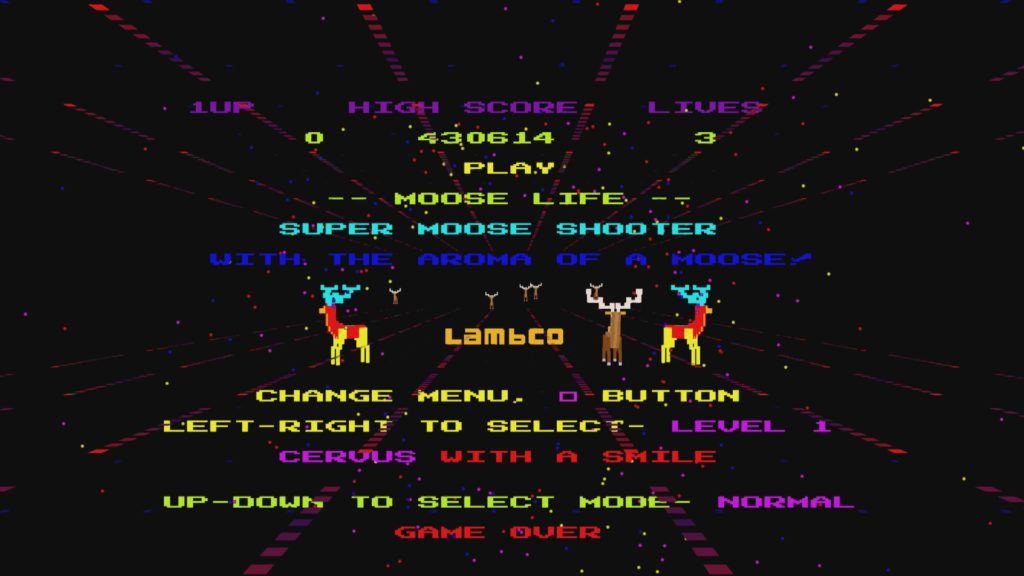
He quickly developed a reputation for producing technically proficient, highly creative games that eschewed popular trends in media in favour of whatever he happened to think was particularly zarjaz at the time — usually any combination of the more psychedelic side of prog rock, various furry creatures and/or the arcade games of Eugene Jarvis — and consequently ended up producing some of the most memorable games of the 8- and 16-bit home computer era.
Following the glory days of the ST and Amiga, Minter disappeared into relative obscurity, seemingly having a bit of a habit of attaching himself to doomed hardware platforms that either never came to fruition — such as the ambitious but sadly unreleased Konix Multi-System, intended to be the first (and probably only) video game console with an arcade-style moving chair accessory — or which were dead pretty much as soon as they got out of the gate, such as the Atari Jaguar.
(That said, Minter’s Tempest 2000 is regarded by most people as arguably the only “must-play” Jaguar exclusive.)
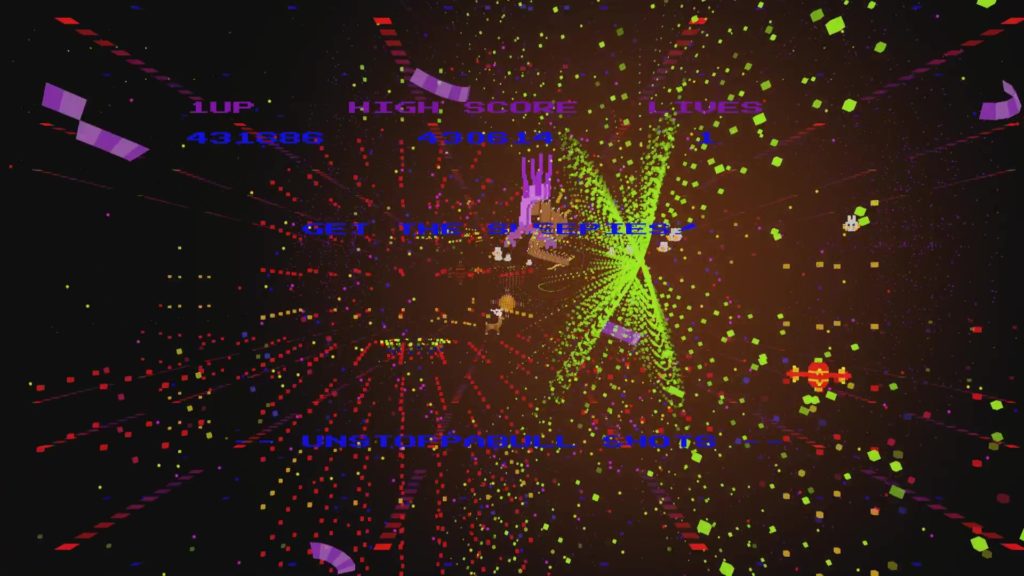
When the smartphone revolution happened, Minter was initially excited by the possibilities these new portable platforms offered, but quickly became disillusioned when said smartphone revolution was followed up shortly afterwards by the in-app purchase and free-to-play revolution.
He made games that were complete upon release, and that he wanted to sell for a single, flat price — but an increasingly cynical mobile market seemingly wanted nothing to do with that side of things, instead demanding games with constant updates and the ability to play without paying — even if that meant being bombarded with ads and unwanted social features.
For a while, it seemed like we might have lost one of gaming’s most creative auteurs, but Minter found new motivation with Sony’s modern platforms — initially the Vita, then onwards to the PS4 and particularly the underappreciated PlayStation VR headset. He set about creating some distinctly Minter-esque experiences for the platform — all of which could be experienced either on the TV or in fully immersive VR — and appears to have been very happy with this new existence.
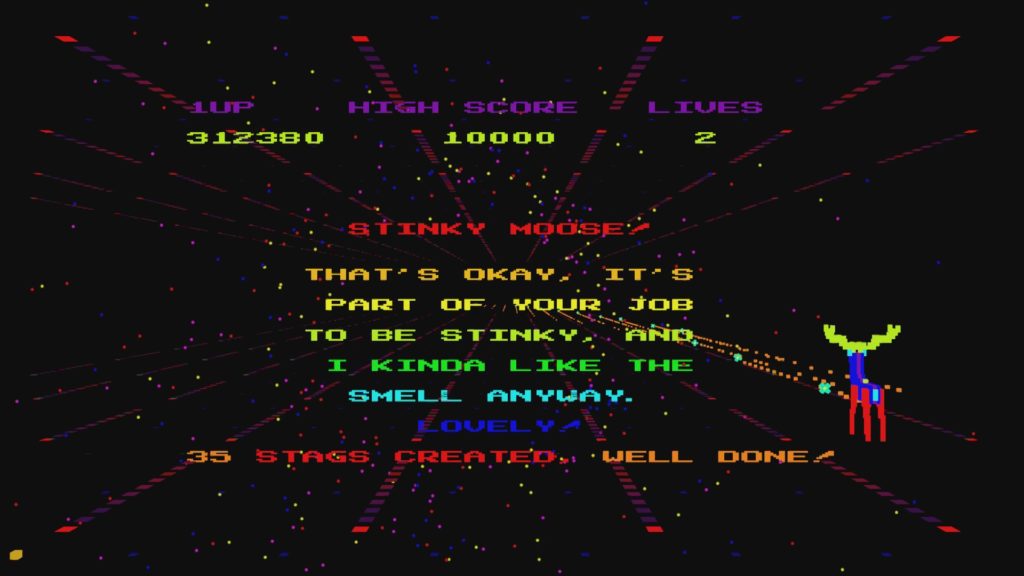
Moose Life is his latest creation, and while the more cynical might look upon it as yet another variation on the Tempest formula — a style of game that Minter has been particularly attached to ever since his Jaguar classic — it’s definitely a good time, particularly in VR.
In Moose Life, you take control of a moose, as you might expect. Said moose is tasked with proceeding down a seemingly endless pair of floating, colourful highways that run parallel to one another.
Holding the X button fires a stream of laser fire ahead, while tapping the circle button causes you to flip over and “jump” to the other highway. Using the analogue stick allows you to smoothly move the moose from side to side as well as controlling its speed forwards and backwards.

Your sole aim in Moose Life is to get to the end of each stage, preferably after blasting as many enemies as you can — and, in true Minter tradition, saving as many fluffy creatures along the way as possible. Upon reaching the end of a stage, you’re given a unique wholesome message of support before being tasked with repeating the process. You then simply play until you run out of lives or you can’t take any more bombardment of your senses.
Like most Minter games, Moose Life is based on an extremely simple concept that gradually adds some interesting new layers as you play. The actual mechanics of Moose Life never get any more complicated than “move and fire”, but the further you go into the levels, the greater variety of enemies you’ll encounter — and different enemies act in very distinctive ways. Some simply fire at you; others explode into bullets; others still will doggedly pursue you until you deal with them.
Thankfully, as Moose Life’s enemies get more interesting, so too do your attacks. Collectable “pills” that appear throughout the stages provide a variety of effects, ranging from simple invincibility in the “Purple Moose Mode” to spread shots, rapid fire and the ability to emit a shockwave when you “jump” between the two parallel highways. You’ll also find some of the furry creatures you save coming to your aid at opportune moments, and this is always a joy to see, whether it’s a ring of giraffes floating around you and protecting you from incoming fire, or a pair of small stags charging at your foes to support your attack.
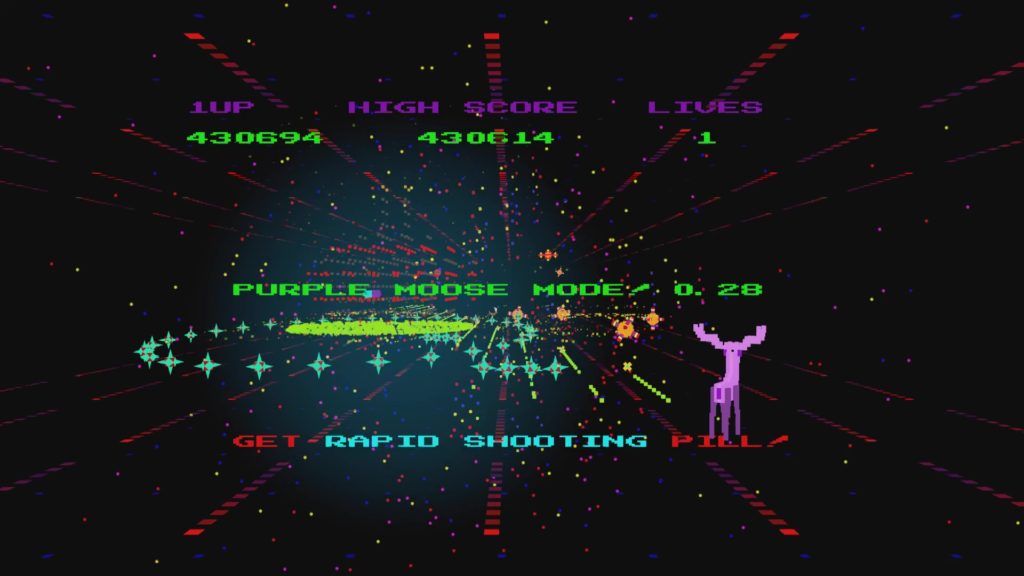
As is usually the case for Minter’s games, Moose Life is a pure arcade experience; there’s no real “point” to it beyond simply trying to get to the end and score as many points as possible. But that’s plenty, because the game is designed to be as much of a psychedelic sensory experience as it is a straight shoot ’em up.
Whether you’re playing on a big TV or immersing yourself fully in the experience in VR mode, it’s hard to look away from the slick, smooth action — and somehow, the game manages to keep its important elements clearly visible even amid the chaos happening on screen most of the time.
This is primarily down to some excellent use of colour, but is also simply a result of how the game feels to play. The responsive, smooth controls make the game feel very natural; when playing in VR in particular, it’s easy to forget that you have a controller in your hand as you instinctively guide the moose on its mission. You never lose track of what you’re doing because there’s such a pleasant feeling of direct connection between you and the game — and this is something that Minter has always been especially good at.
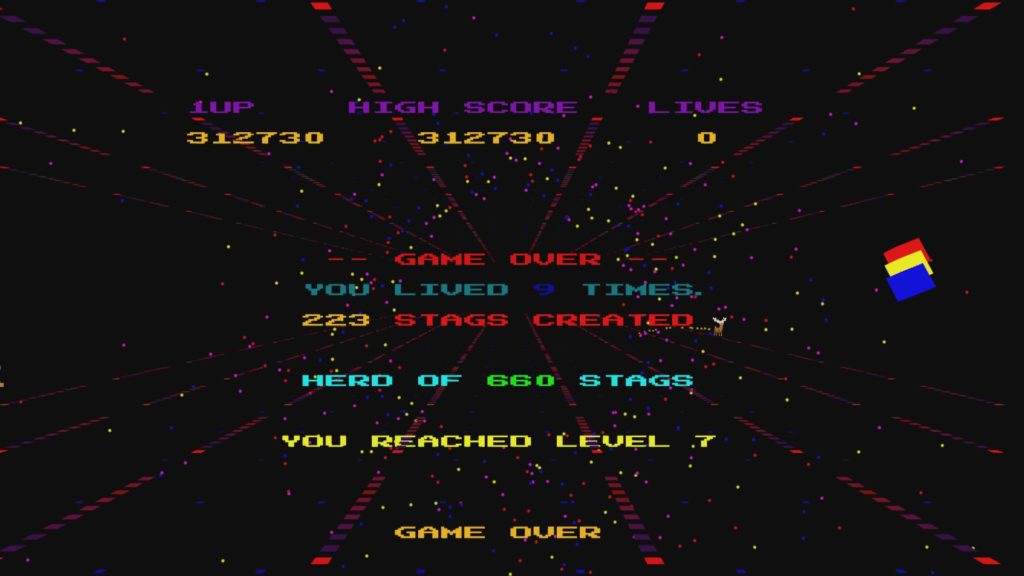
By its very nature, Moose Life is the kind of game you need to be in the right mood to enjoy — there’s no compelling story here, no cute anime girls, no online leaderboards, no RPG-style progression. It’s just a simple, pure example of a video game — and sometimes that’s exactly what you need and want.
It’s pure, psychedelic, completely surreal escapism that will help you forget the “real” world for a few minutes or hours — particularly if you have the means of immersing yourself fully in it with a PSVR headset and a good pair of headphones cranked up nice and loud. In the world we live in right now, experiences like this are especially important — and I know I’ll certainly be making good use of it whenever it all gets a bit much!
Join The Discussion
Rice Digital Discord
Rice Digital Twitter
Rice Digital Facebook
Or write us a letter for the Rice Digital Friday Letters Page by clicking here!
Disclosure: Some links in this article may be affiliate links, which means we may earn a small commission if you make a purchase after clicking on them. This is at no additional cost to you and helps support Rice Digital!
- Letter from the Editor: passing the torch - June 30, 2023
- Super Woden GP 2 is looking promising - June 30, 2023
- Inti Creates is making a 32 bit-style Love Live action platformer - June 26, 2023






